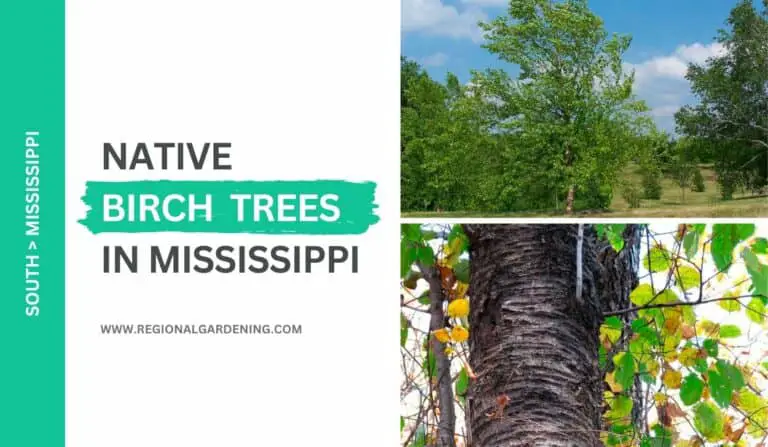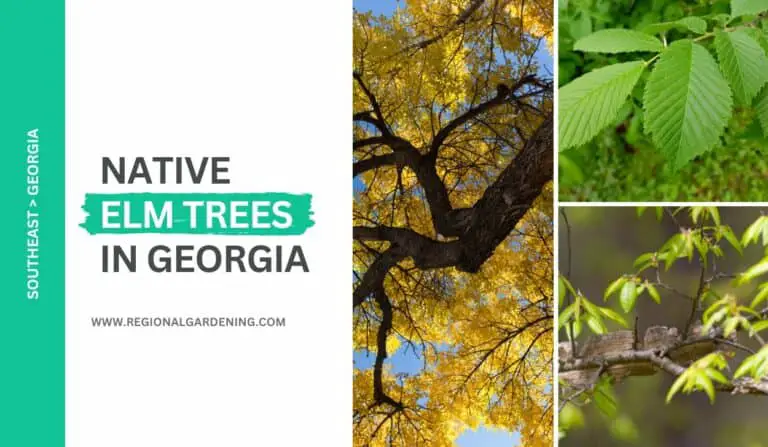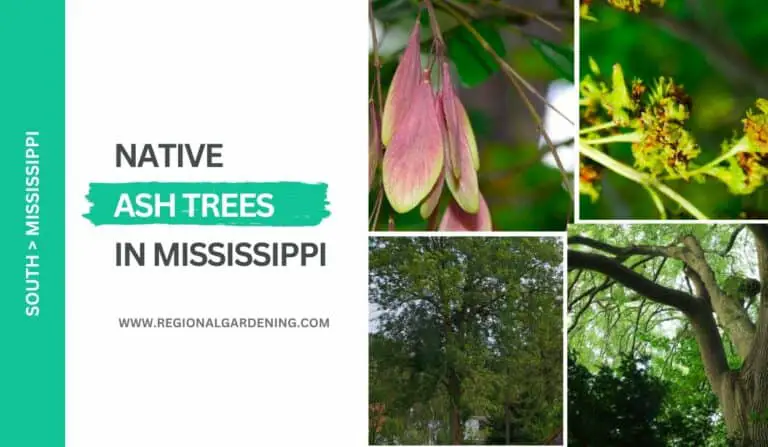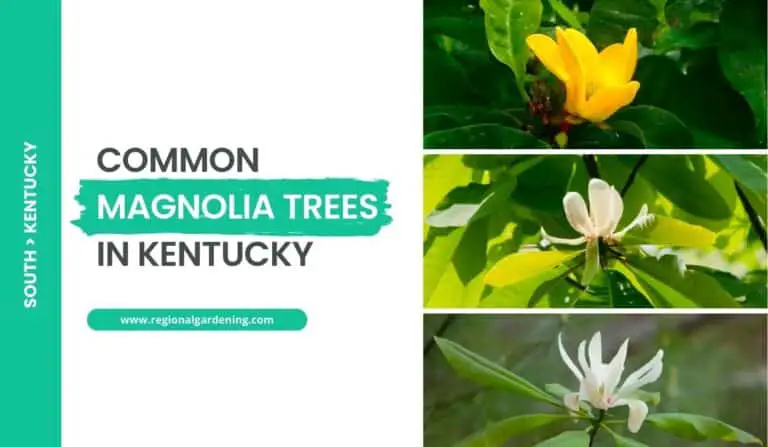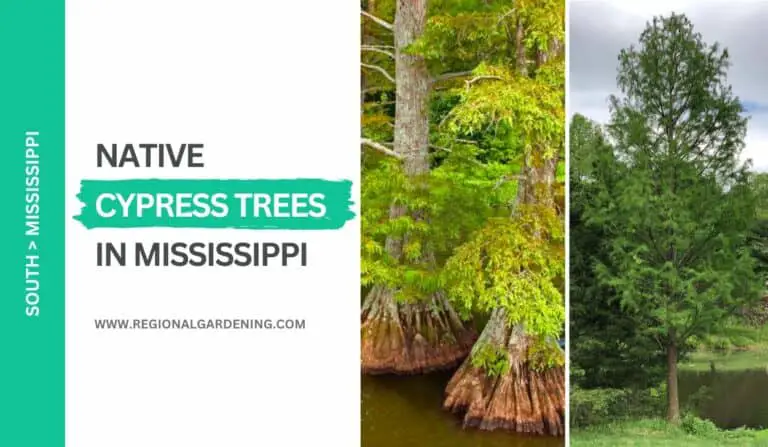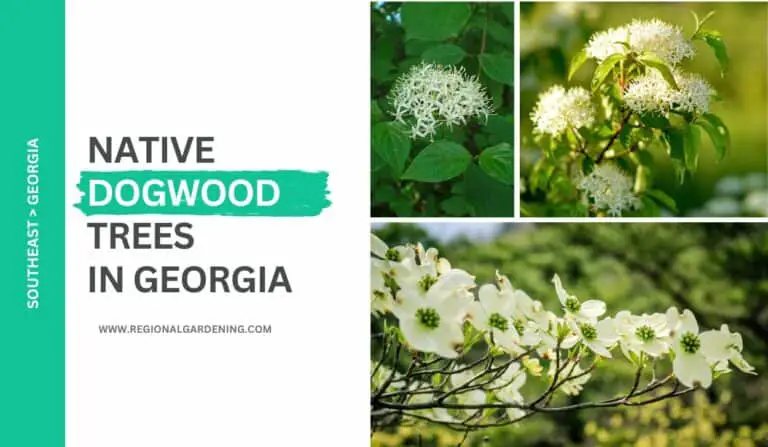6 Native Maple Trees In Oklahoma (With Pictures)
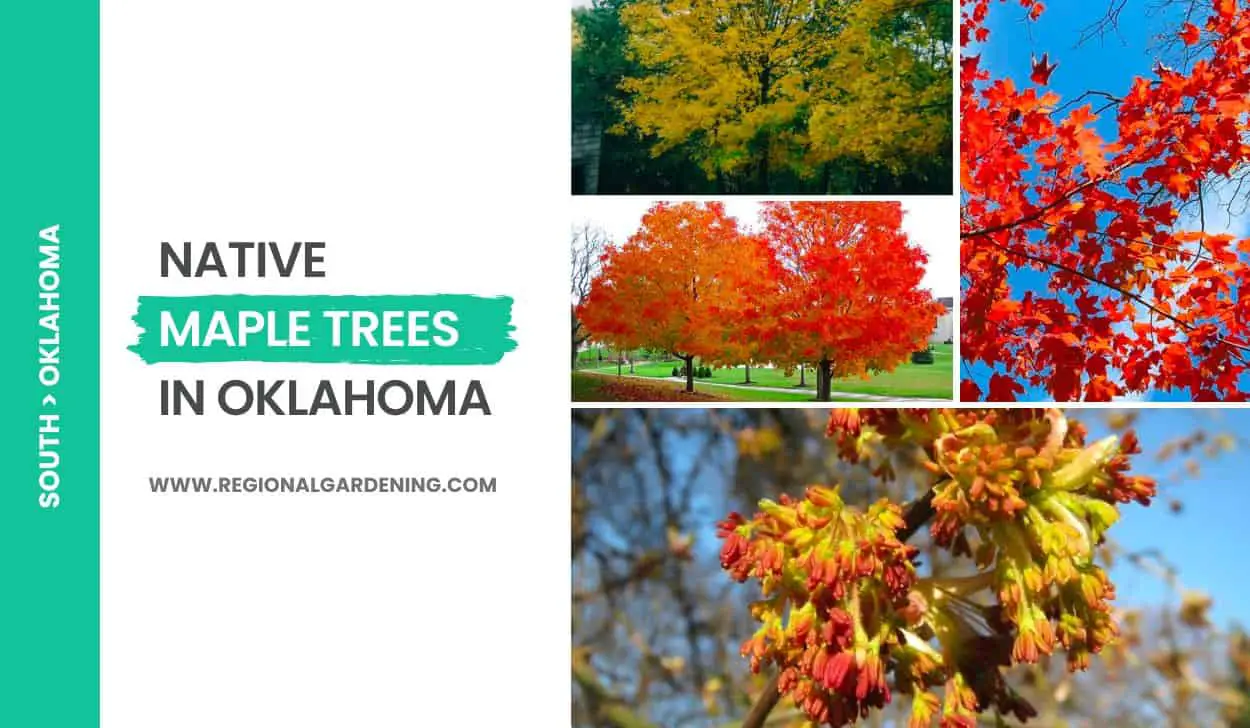
Oklahoma’s maple trees have a special place in the hearts of its residents because they provide breathtaking color to the landscapes, shade, a source of income for syrup producers, and a sense of seasonal delight.
These elegant trees stand tall and proud, their brilliant shades of gold, orange, and red adorning the scenery. Whether lining the streets of bustling cities or gracing the tranquil countryside, maple trees in Oklahoma mesmerize onlookers with their captivating beauty.
In this article, we will look at the six most common types of maple trees in Oklahoma, as well as their full descriptions.
Let’s begin.
1. Red Maple
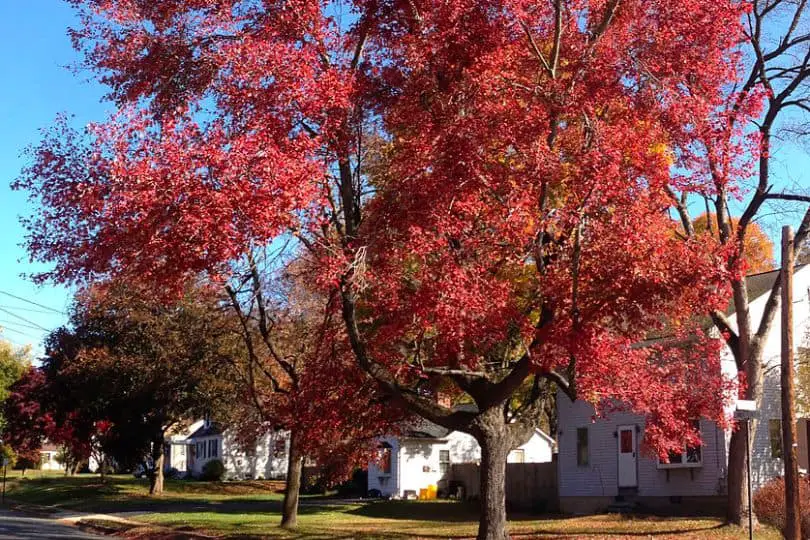
- Scientific Name: Acer rubrum L.
- Common Name(s): Red Maple, Scarlet Maple
- Mature Height: 40 to 70 feet (12 to 21 meters)
- Native Region: Eastern and central parts of the State
- Flowers: Red flowers in dense clusters appearing in early spring before the leaves
- Uses: Used as a shade tree, the wood is used in the manufacture of furniture and for turnery, woodenware, and also for fuel.
The Red Maple, sometimes known as the Scarlet Maple, is a medium-sized tree widespread in eastern and central Oklahoma. Its rapid growth and short lifespan make it a popular choice for shade trees, however, it is regarded as inferior to the sugar maple in this regard. On young stems, the bark of the Red Maple is smooth and light gray, but on old limbs and trunk, it is dark grey and rough.
Red Maple leaves are 2 to 5 inches long with 3 to 5 pointed, saw-toothed lobes separated by sharp angular sinuses or holes. The upper surface of the leaves is light green when mature, while the lower side is yellowish and partly covered in pale down. The leaves turn bright colors of red, orange, and yellow in fall, bringing a colorful touch to the scene.
The Red Maple produces thick clusters of red flowers in early spring before the leaves show. These flowers’ buds frequently turn a deep red before opening.
The Red Maple’s fruit, which consists of pairs of winged seeds, or keys, ripens in late spring or early summer. These seeds are half an inch to an inch long and are linked to long drooping stems. The keys’ colors can range from red to reddish-brown to yellow.
The wood of the Red Maple, sometimes known as soft maple in the trade, is hefty, close-grained, and light brown. Despite its low strength, it is widely employed in the production of furniture, turnery, and woodenware. It is also a popular fuel source.
The Red Maple comes in two varieties in eastern Oklahoma. Acer rubrum subsp. Kirch’s tomentosum. Acer rubrum var. bears densely tomentose leaves on the underside, whereas Acer rubrum var. tridens Wood has leaves that are three-lobed, distantly serrated and have incurved glandular teeth. These differences increase the variety of Red Maple species found in the state.
2. Silver Maple
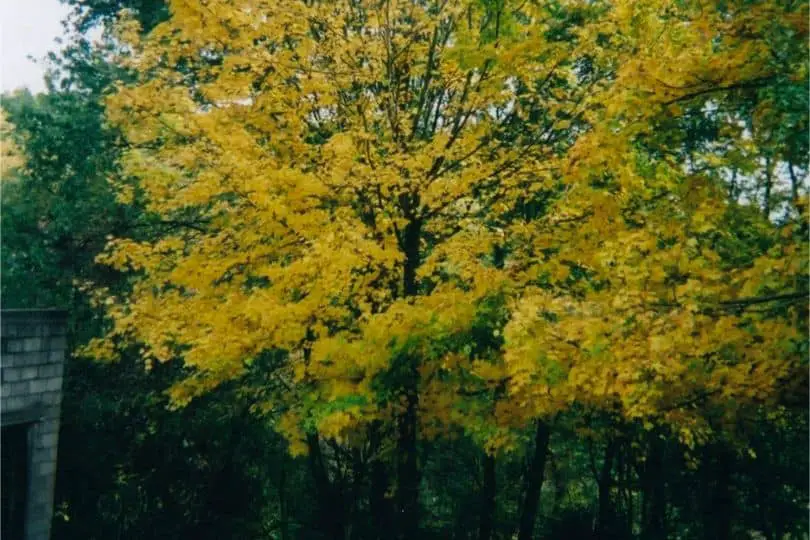
- Scientific Name: Acer saccharinum L.
- Common Name(s): Silver Maple, Soft Maple
- Mature Height: 100 feet or more (30 meters or more)
- Native Region: Eastern half of the State (Oklahoma), North America
- Flowers: Greenish-yellow, in dense clusters
- Fruit: Winged seeds (“keys”) with wings 1 to 2 inches long
- Uses: Shade tree, flooring, furniture, fuel
The silver maple, scientifically called Acer saccharinum, is often found in the eastern half of Oklahoma on moist soil and along streams. This huge tree can grow to be 100 feet tall or more, with diameters surpassing 3 feet.
It has a characteristic appearance, with a short stem that branches into big ascending limbs, which subsequently subdivides into smaller drooping branches with upward turns at the terminals. The bark on mature stems is dark gray and peels into lengthy scales, whereas the bark on juvenile shoots is smooth and can range from reddish to yellowish-gray in color.
Silver maple is well-known for its fast growth, making it a popular shade tree. However, because of its brittleness and vulnerability to pests and fungus diseases, it is regarded as less desirable than other trees.
Silver maple leaves are opposite on the stalk and feature 3 to 5 lobes with serrated edges. They feature a pale green upper surface and a silvery-white underside. The buds, like those of the red maple, are spherical, red or reddish-brown, and blunt-pointed.
Before the leaves fully emerge in the spring, the silver maple produces thick clusters of greenish-yellow flowers. In late spring, these blossoms are followed by the maturing of the fruit. The fruit is made up of paired winged seeds known as “keys,” which have wings that are 1 to 2 inches long. These seeds are linked to an inch-long slender, flexible, thread-like stalk.
Silver maple wood is soft, weak, and easily worked. It has a consistent texture but is fragile. When exposed to the outdoors, the wood deteriorates. Despite its restrictions, it is used for flooring, furniture, and fuel on occasion.
The silver maple is a good tree for Oklahoma landscaping, especially in locations with moist soil or near water sources. It offers plenty of shade and grows swiftly, providing vertical flair to the yard. It should be emphasized, however, that regular checking for insect infestations and diseases is required to keep the tree healthy.
Furthermore, because of its brittle nature, constant pruning and maintenance may be required to prevent branches from breaking during storms.
3. Sugar Maple
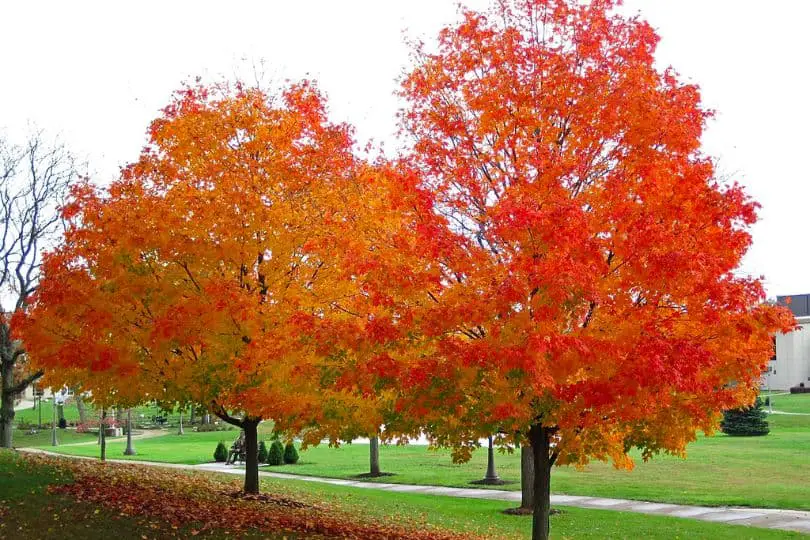
- Scientific Name: Acer saccharum Marsh.
- Common Name(s): Sugar Maple, Sugar Tree
- Mature Height: More than 80 feet (24 meters)
- Native Region: Southeastern and northeastern parts of Oklahoma.
- Flowers: Yellowish-green flowers on long stalks, appearing with the leaves. Separate clusters of male and female flowers.
- Uses: The sap of the sugar maple is used to make maple sugar and maple syrup. The wood is commercially known as hard maple and is used in flooring, furniture, shoe lasts, and various novelties.
The sugar maple (Acer saccharum Marsh.) is a huge deciduous tree that is widely found in Oklahoma gardens. It grows on chilly slopes, notably in limestone soil in the state’s southern and northeastern districts, as well as in Caddo County’s deeper canyons. This tree provides plenty of shade thanks to its massive and symmetrical crown.
The physical properties of the sugar maple are distinct. Its bark is light gray to brown and relatively smooth when young. The bark, on the other hand, breaks up into lengthy and uneven plates or scales that range in hue from gray to practically black as it ages. The sugar maple’s twigs are smooth and reddish-brown, with sharp-pointed winter buds. This tree can grow to be more than 80 feet (24 meters) tall and more than 2 feet (0.6 meters) in diameter.
The leaves of the sugar maple are one of its most notable characteristics. They are basic and opposing, measuring 3 to 5 inches (7.6 to 12.7 cm) across. The leaves feature 3 to 5-pointed lobes with scant teeth, and the lobe divisions are rounded. The leaves, which are initially dark green on top and lighter green beneath, convert into spectacular hues of rich red, crimson, orange, and clear yellow during the fall months.
Yellowish-green blossoms appear on the sugar maple in the spring. These flowers grow in discrete clusters, with male and female blooms grouped separately. These blooms, which emerge alongside the leaves, are supported by long thread-like stalks.
The tree bears fruit in the form of a two-winged “samara” or “key” in the fall, with wings that are somewhat divergent and about 1 inch (2.5 cm) long. The seed of this fruit is disseminated by the wind.
The sugar maple is recognized not only for its beauty but also for its usefulness. This tree’s sap is collected and processed to make maple sugar and maple syrup. Sugar maple wood, sometimes known as hard maple, is highly valued for its great quality. It is used to make flooring, furniture, shoe lasts, and a variety of novelty things.
Sugar maples should be planted in regions with cool slopes and well-drained limestone soil for good cultivation in Oklahoma settings. These trees grow well in both direct sunlight and partial shade. Adequate irrigation during dry seasons is critical for stress prevention.
Furthermore, organic matter mulching can assist save soil moisture and sustain optimal growing conditions. Pruning to remove any damaged or dead branches is suggested, as is annual treatment with a balanced fertilizer for optimal growth and health.
4. Chalk Maple
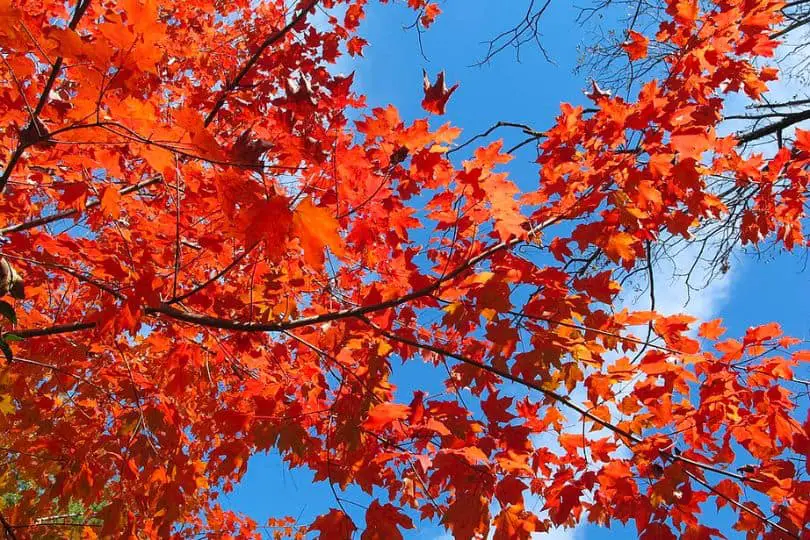
- Scientific Name: Acer leucoderme
- Common Name(s): Chalk Maple
- Mature Height: 30-50 feet (9-15 meters)
- Native Region: Southeastern United States
- Flowers: Small yellow-green flowers in spring.
- Fruit: Small, winged seeds called samaras.
- Uses: Ornamental tree in landscaping, provides shade.
Chalk Maple, scientifically known as Acer leucoderma, is a beautiful and relatively small-sized tree that is native to the southeastern United States. It typically reaches a mature height of 30 to 50 feet (9 to 15 meters) and has an upright, rounded canopy. The name “chalk maple” comes from its white, chalky bark, which adds to its overall aesthetic appeal in landscapes.
This deciduous tree is well-suited for Oklahoma landscapes as it is adaptable to a wide range of soil types, including sandy and clay soils. It prefers full sun to partial shade and can withstand heat and drought conditions. However, it is important to provide it with regular watering during dry periods to keep it healthy.
In spring, Chalk Maple produces small yellow-green flowers, which are not particularly showy but add a subtle charm to the tree. These flowers are followed by winged seeds called samaras, which are dispersed by the wind. The samaras develop in clusters and add visual interest to the tree during the summer and fall months.
Chalk Maple is primarily used as an ornamental tree in landscaping due to its attractive features. Its rounded canopy provides ample shade, making it a perfect choice for yards or gardens. The tree’s appealing bark, which becomes more pronounced with age, further enhances its aesthetic value.
To maintain a healthy Chalk Maple in an Oklahoma landscape, regular pruning is recommended to remove any dead or damaged branches. It is also important to provide adequate water during dry spells and ensure good soil drainage. Mulching around the base of the tree helps retain moisture and suppress weed growth.
5. Bigtooth Maple
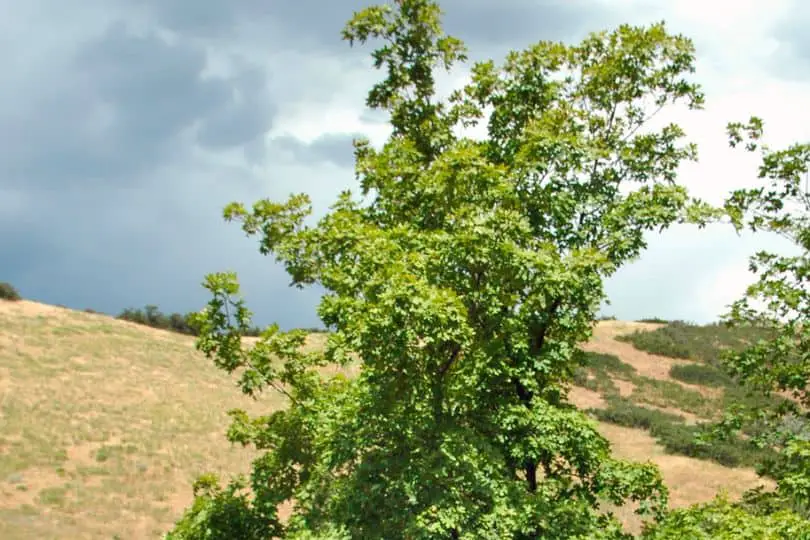
- Scientific Name: Acer grandidentatum Nutt.
- Common Name(s): Bigtooth Maple, Western Sugar Maple
- Mature Height: Up to 30 feet (9 meters)
- Native Region: Western United States, from southern New Mexico and Arizona to northern Montana and Idaho
- Flowers: Small, without petals, borne on long slender stems in clusters
- Fruit: Two spreading and erect wings, reddish when immature, turning dark green at maturity in the fall
- Uses: Ornamental tree, shade tree
The western sugar maple, commonly known as the bigtooth maple or Acer grandidentatum, is a tiny tree native to the western United States. From southern New Mexico and Arizona to northern Montana and Idaho, it can be found. It is most common in the extreme eastern part of Oklahoma, specifically in the Wichita Mountains in the southwestern region.
This tree enjoys cool, damp environments and can grow up to 30 feet tall with a diameter of 8 to 10 inches. Its branches grow more vertically than horizontally. Bigtooth maple bark is thin and dark brown in hue.
The leaves of the bigtooth maple are opposite and range in size from 2 to 5 inches. They are made up of three lobes, each with a wavy edge. The leaves upper surface is thick, dark green, and lustrous, while the below surface is pale and fuzzy. The leaves turn scarlet or yellow in the autumn, providing rich color to the scene.
The bigtooth maple produces tiny blooms without petals in the spring. These flowers bloom alongside the leaves and are borne in clusters on long, slender stems. On the same tree, there are two kinds of flowers: male and female. The bigtooth maple’s fruit consists of two spreading and upright wings that are reddish when juvenile and turn dark green when ripe in the fall. The seeds are about a quarter-inch long.
The wood of this tree is highly valued for being virtually white, strong, hefty, and close-grained. The bigtooth maple is widely planted as an ornamental tree or shade tree in Oklahoma gardens. Its lovely foliage, especially in the brilliant autumn colors, makes it a lovely addition to any landscape.
The tree requires little care and thrives in chilly, damp environments. Watering should be done regularly, especially during dry months, to keep the soil hydrated. A layer of mulch at the base of the tree can also assist conserve moisture and inhibit weed growth.
6. Boxelder Maple
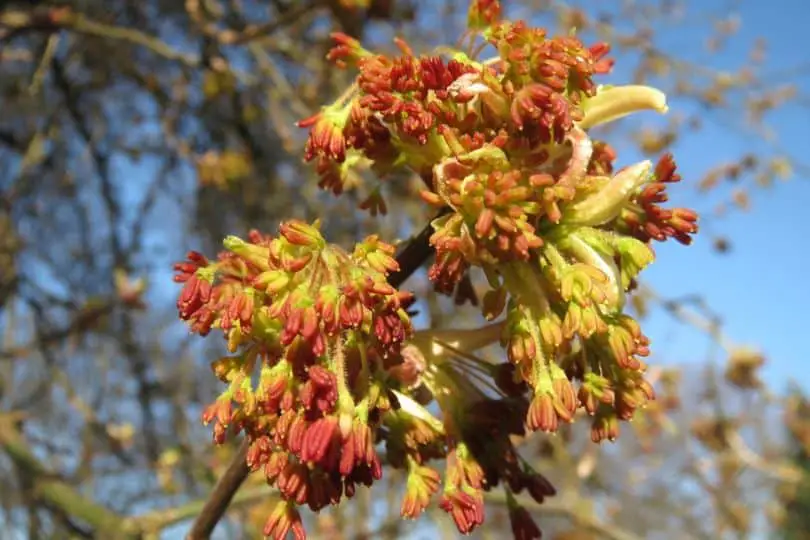
- Scientific Name: Acer Negundo L.
- Common Name(s): Box Elder, Ash-Leaf Maple
- Mature Height: 60 to 70 feet (18 to 21 meters)
- Native Region: Eastern and Southern parts of Oklahoma
- Flowers: No flowers
- Uses: Shade tree, not long-lived or generally satisfactory for any purpose, occasionally used for fuel
The Box Elder, sometimes known as the Ash-Leaf Maple, is a tree found in eastern and southern Oklahoma. It grows to medium size, with a maximum diameter of 24 inches and a height of 60 to 70 feet. This tree multiplies, making it famous for providing shade. Its weak limbs and branches, however, make it vulnerable to illness and insect assault. It is a short-lived tree that may not be ideal for a variety of tasks. It reproduces rapidly but is vulnerable to grazing and cultivation.
Box Elder bark is smooth and green on young branches, but thin, grayish to light brown, and severely divided on mature trees. Its leaves are compound, with three opposing, smooth, glossy, and green leaflets (though occasionally five to seven). The leaflets are 2 to 4 inches long and 1 to 2 inches wide, with a total length of 5 to 8 inches.
The Box Elder produces seeds known as samaras or keys in late summer or early fall. These seeds have wings that resemble those of a sugar maple but are smaller in size. Unlike the red and silver maples, the Box Elder’s seeds ripen in late summer or early October.
When exposed to heat and moisture, Box Elder wood is soft, light, fragile, close-grained, and prone to decay. It is infrequently used as fuel but has little commercial value.
In southern Oklahoma, you may come across a Box Elder variation called Acer Negundo var. Pax texanum. A thick layer of whitish hairs on the branchlets and midribs of the leaves distinguishes this variety in the early part of the season.
Similar Articles
- Native Pine Trees In Oklahoma
- Native Elm Trees In Oklahoma
- Native Hickory Trees In Oklahoma
- Common Palm Trees In Oklahoma
- Native Oak Trees In Oklahoma
- Native Cedar Trees In Oklahoma
- Common Cherry Trees In Oklahoma
- Native Ash Trees In Oklahoma
- Common Birch Trees In Oklahoma
- Native Cypress Trees In Oklahoma
Native Maple Trees In Oklahoma – Sources
The Regional Gardening team makes sure that the information in our articles is accurate by only using sources that are known to be trustworthy. Some of these sources are peer-reviewed journals from government agencies, well-known universities, and scientific research organizations.
- Forest Tree Species, Oklahoma State University Extension
- Oklahoma Trees for Gardening Resource, Oklahoma State University Extension
- Oklahoma Native Trees by County, Oklahoma Forestry Services
- Native Plant Guide, Oklahoma County Conservation District
- Plants, Seeds & Landscapes, Oklahoma Native Plant Society
- Plant Selections for Oklahoma, Oklahoma State University Extension


